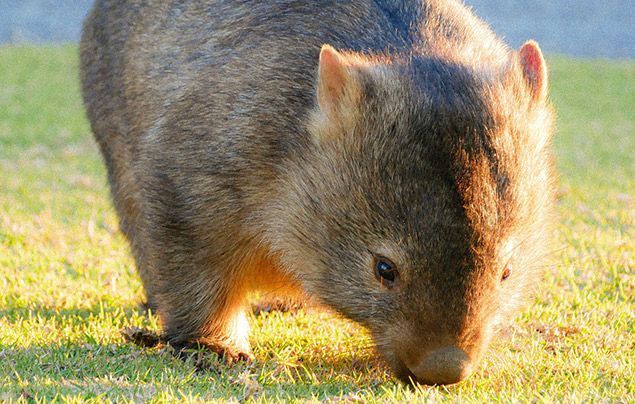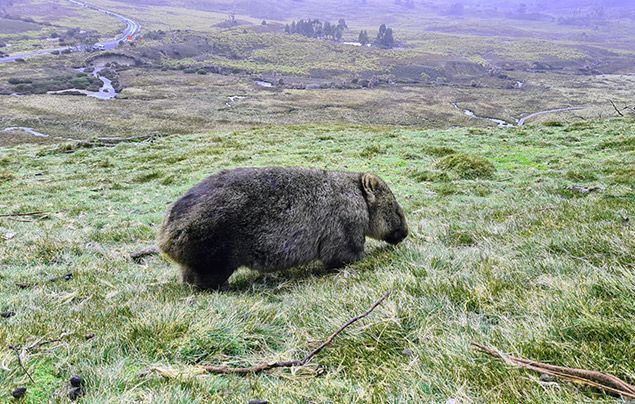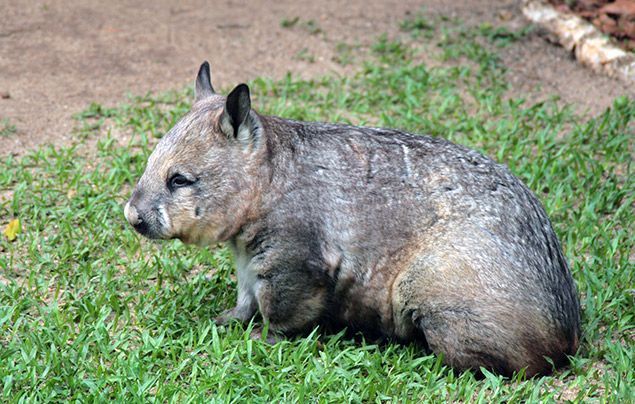Funny Picturs of the Northern Hairynosed Wombat
There's more to these Aussie animals than meets the eye! So come on gang, let's find out some fantastic facts about wombats…
Facts about wombats…

1)Wombats are marsupials
Like their tree-climbing cousin, the koala, wombats are marsupials. This means that they are part of a particular group of mammals, who have pouches where their newborn young develop.
Wombat babies are born super small and helpless, so the pouch is a safe place for them to grow up and get ready for the world!
Did you know? Kangaroos, koalas, and wombats might not look alike, but they're all marsupials! Plus, their adorable babies are all known as joeys.
2) There are three different species of wombat
These are the common wombat (also known as the bare-nosed wombat), the Southern hairy-nosed wombat, and the Northern hairy-nosed wombat. All three species live in Australia, including on the island of Tasmania. They have a variety of habitats, including mountains, forests, and grasslands!
3) Wombats aren't as small as you might think!
An adult wombat usually grows to about a metre long – the same as a medium-sized dog. They can weigh up to 40 kilograms, and have wide, strong feet which are great for digging!
As well as being bigger than expected, wombats also live for a surprisingly long time. The oldest wombat ever, a large male known as Patrick, was 32 when he died!
4) Wombats are mostly nocturnal
These clever critters spend their nights foraging for food, or digging new tunnels, entrances, or exits for their ever-expanding burrows! They are herbivores, so most of their time is spent grazing on native grasses.
Wombats usually spend their days tucked away in their underground homes. However, they do sometimes come out to sunbathe and warm up, especially when the weather is very cold.

5) Wombats can run at speeds of up to 40km per hour!
Good luck stopping a rampaging wombat! These amazing animals can move surprisingly quickly when they need to, and can sustain this speed for up to 90 seconds. There are even reports of humans being knocked over by charging wombats!
6) Wombat poo is cube-shaped (yes, really!)
A wombat's intestines have a curious ability – they shape their poop into angular cubes.
Wombats often mark their territory using their poo, and so scientists believe that the square-sided shape is designed to stop the poop from rolling away, ensuring the smelly signals stay put!
7) During bushfires, wombat burrows become places of shelter for many other animals
Wombat burrows, known as warrens, can be huge! These underground homes can contain tunnels over 200 metres long.
And these warrens don't just serve as homes for wombats – they can become vital shelters for other small mammals, too. During bushfires, the tunnels stay cool, offering protection from the flames. Rock wallabies, bettongs, skinks and even little penguins have been seen using wombat warrens to escape fires, or hide from predators.
A black-footed wallaby was once spotted using a wombat burrow even more than the wombat owner. This sneaky intruder visited nearly 2,000 times in eight weeks!

8) In prehistoric times, herds of giant wombats roamed Australia!
These mega-marsupials formed a group of animals called Diprotodon, which lived in Australia during the Ice Age. Diprotodons were about 1.8 metres tall and weighed as much as 2,800 kilograms – roughly the same as a rhinoceros!
9) Their pouches face backwards
Most marsupials have their pouches on their fronts, but wombats have theirs facing backwards. This protects wombat joeys in the pouch from being sprayed with dirt, while their mother digs in the ground.
10) The Northern hairy-nosed wombat, is critically endangered
Sadly, there are only 115 Northern hairy-nosed wombats left on Earth. Due to food shortages and droughts, this super species has been driven out of their historic habitats. They now live in just two tiny locations in Queensland, Australia.
Luckily, conservationists are working hard to help. In the 1980s, just 35 Northern hairy-nosed wombats were left alive – so things are already improving!
Thank you to Jeremie Barnier, Alois Bühlmann, Laura Barry, Meg Jerrard, and Nico Smit for the images used in this article.
We hope you enjoyed our facts about wombats! Did you learn anything new? Let us know in the comments below.
Likes
sartainnothavehou.blogspot.com
Source: https://www.natgeokids.com/uk/discover/animals/general-animals/facts-about-wombats/
0 Response to "Funny Picturs of the Northern Hairynosed Wombat"
Enregistrer un commentaire